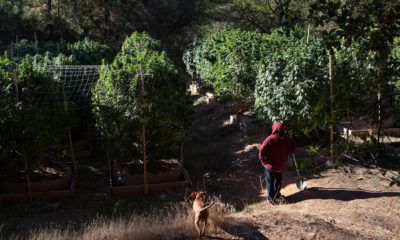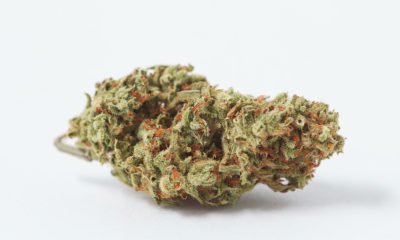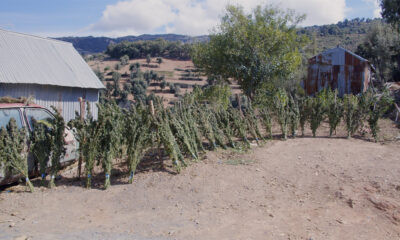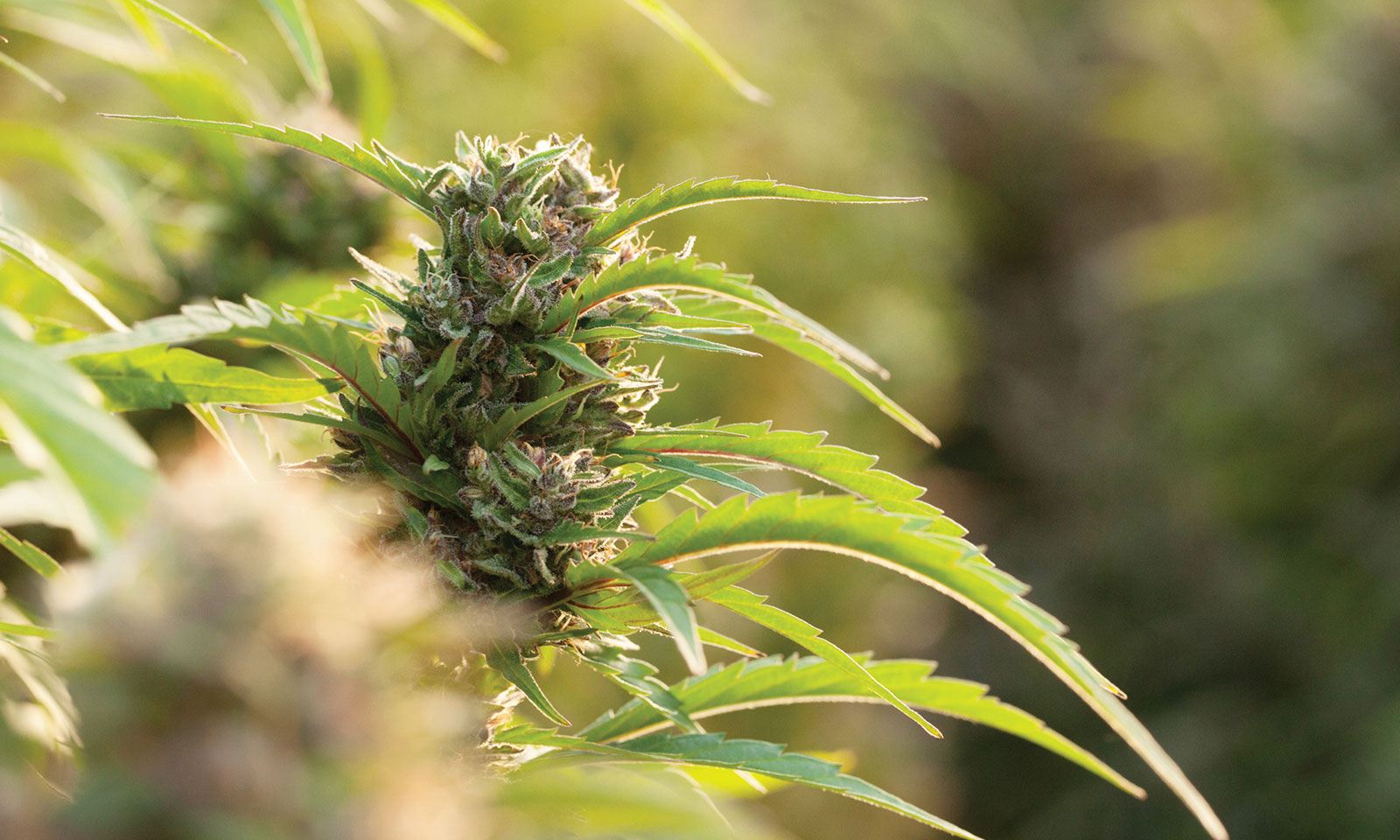
Culture
5 Simple Ways to Be a Sustainable Cannabis Consumer
Growing and enjoying cannabis comes with environmental costs. Here are some tips to ensure the industry stays green.
There are as many ways to use cannabis as there are cannabis consumers. Unfortunately, most of those consumption methods have a major downside: They create a bunch of waste in the process.
Cannabis business attorney Sylvia Chi says the most concerning environmental issue for the cannabis consumer is excessive packaging, especially when you compare cannabis packaging to non-medicated food packaging.
“There are definitely better ways to do it,” Chi says. “There aren’t good ways to reuse or recycle; most dispensaries say they can’t accept used jars, not to mention all the other packaging. What are you supposed to do with a huge stash of glass jars? Make candles?”
Chi also questions the usefulness of recycling in general, as recent upheavals in the market have lead to more recyclables ending up in landfills.
According to a July 2018 report from the EPA, American citizens recycle about 34.7 percent of waste that can be recycled. The United States usually sends about half of that plastic overseas to be recycled, but as of Jan. 1, China stopped accepting foreign waste — thereby rerouting millions of tons of recyclable products into the landfill or the ocean this year.
However, one company called PL28 is actively cleaning plastic from the oceans and turning it into packaging for the cannabis industry. Jayson Adam Stewart, founder and CEO of PL28, says that his company chose to focus on the cannabis industry first because “we have an opportunity right now to shape how the industry grows, so bad habits don’t become too ingrained to fix.”
“Ocean plastic costs about the same as virgin plastic and 90 percent of plastic can be replaced with ocean plastic, so there really is no excuse,” Stewart says. “Consumers need to hold brands responsible for their choice of materials.”
Chi agrees that cannabis consumers have the purchasing power to reward companies attempting to fix pollution problems.
“As a consumer, I prefer to patronize companies with environmentally friendly practices, but am also wary about greenwashing,” she says, citing the practice of companies who attempt to appear sustainable despite acting otherwise. “As an attorney, I know that even though the law prohibits making deceptive claims and requires substantiation for environmental claims, lots of companies still get away with claims that are not sufficiently specific or qualified.”
Fighting greenwashing is especially difficult in the cannabis industry because the federal government refuses to certify cannabis products through its various environmental certification programs. While there are some private certification programs that have emerged without oversight from the government, individual states have been slowly building their own certification programs.
In California, for example, the state is required to establish an organic certification program by 2021 that’s comparable to the National Organic Program. Until then, Chi says, “consumers will mostly have to take it on faith when grower claim they’re using organic-like production methods.”
Beyond thinking about how your cannabis is packaged and certified, here are five other ways to ensure you are a sustainable cannabis consumer:
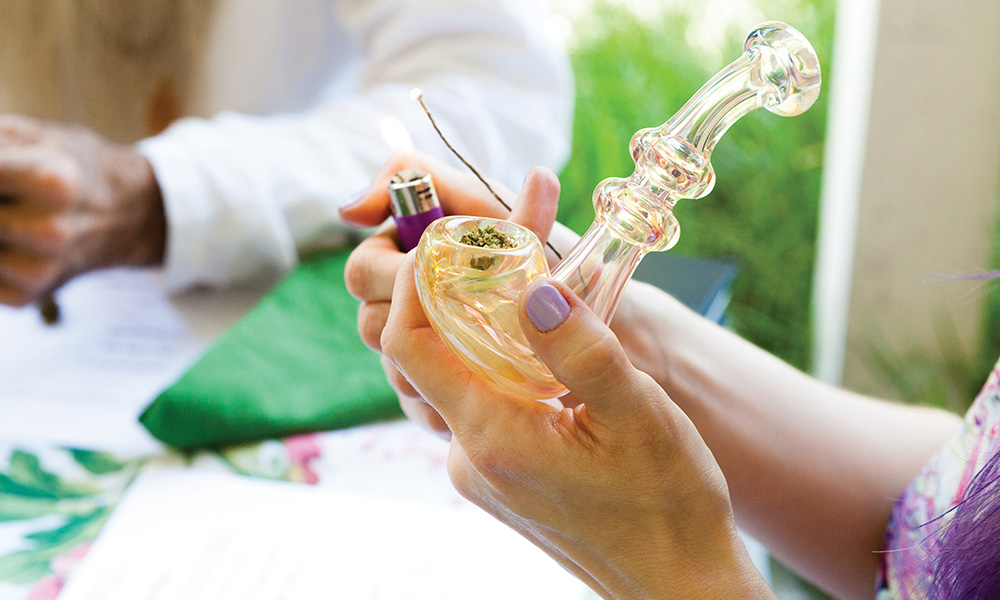
Using a hempwick helps to optimize the smoking experience and reduce the use of disposable lighters. Photo Gracie Malley for Cannabis Now.
1) Purchase From a Local Source
Purchasing cannabis from a local source makes sense for a number of reasons. Similar to why many environmentalists recommend eating local food, by purchasing local cannabis, more money stays within your community, the product is less likely to be spoiled or tampered with and you’ve reduced the distance the cannabis had to be shipped, which promotes better air quality and reduces pollution. Buying (or bartering) locally also can support small, organic farmers, making it less likely they will need to become part of a larger company to survive. Finally, you might be fortunate enough to get to know the product’s story and develop a relationship with your neighbors who produced it. Strong communities of growers and patients are crucial for keeping medicine affordable.
2) Grow Your Own Outdoors
Many states now have laws in place that allow medical or adult-use consumers to grow their own supply. If you are not able to grow your own, either due to physical limitations or because it is not allowed where you live, your state likely still allows patients to delegate this delicate task to a caregiver. Grow outdoors whenever possible to reduce energy use. There is no shortage of online and print resources on the topic of environmentally friendly growing methods. Keep in mind there are sustainable options for water supply, light sources, soil and pesticides.
3) Avoid Vape Waste
Disposable vape pens and cartridges are one of the most convenient ways to get cannabinoids into your system, but they create hoards of toxic waste and are not necessarily healthier than smoking. Pre-filled vape pens are not regulated for safety and the heating mechanism can transform solvents, flavoring agents and additives into carcinogens and dangerous toxins. Until recycling programs for vape batteries and cartridges are more widespread, consider purchasing a refillable vape. While some cities such as San Francisco are also starting to spread awareness about vape waste and are pushing to hold manufacturers accountable, it’s best to avoid disposable vapes until the vape recycling is available in your area.
4) Smoke Sustainably
Have you ever thought about the long-term health effects of inhaling butane from lighters or burned sulfur from matches? In addition to the health risks, lighters also emit flint powder and destroy terpenes. The solution? Hempwick! This is hemp twine dipped in beeswax that burns at a safer and more delicious temperature, plus it reduces how many disposable lighters end up in the landfill.
5) Buy Clean Green Certified Cannabis
Thanks to federal prohibition, marijuana cannot be officially referred to as an organic product because the USDA does not yet recognize it as a legitimate crop. Instead, for cannabis producers, Clean Green Certified is the next best option to the official organic seal. Since 2004, Clean Green Certified has been inspecting and approving producers who use sustainable, natural, organic practices. Until marijuana is legalized on a federal level, the cannabis industry will continue to innovate on its own and build its own sustainable systems — and conscious consumers should do their part to reward those companies and cultivators taking the extra step of respecting the earth.
Originally published in the print edition of Cannabis Now.







